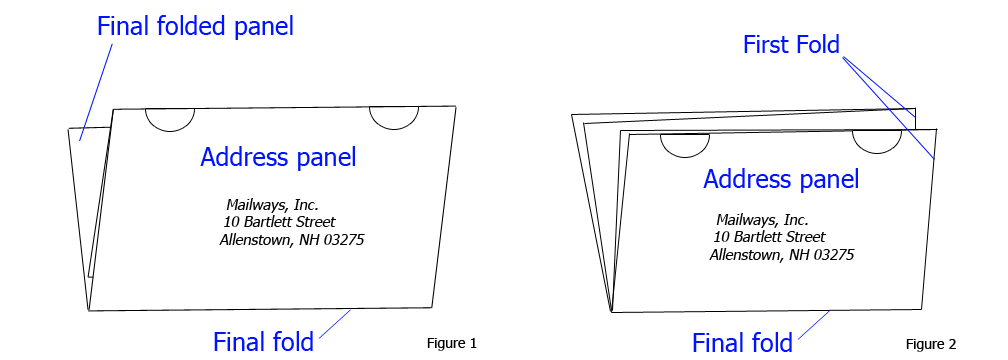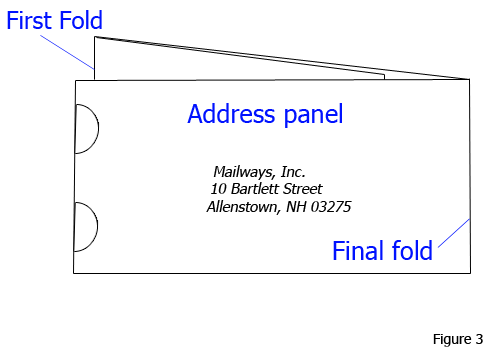When designing a mail piece, the first decision you’ll need to make is whether to mail it as a letter or a flat. We’ll cover the differences between the two, and then give some examples of when each type of piece might be the appropriate choice.
Letters cover everything from 3 ½” by 5” by .007” thick postcards up to 6 ⅛” by 11 ½” by ¼” thick envelopes and mini booklets. Anything over this, up to 12” by 15” by ¾” envelopes, magazines, newspapers, and over-sized postcards, gets mailed as a flat. Automated letters provide the best postage rates possible. Non-automation letters (such as unsealed folded pieces) receive postal rates that are comparable to flats, and are only recommended in a few cases, mentioned below. Flats, while having higher postage rates, do have the advantage of being able to convey more information and be a more readily noticeable piece in a customer’s mailbox.
Letters are ideal for announcements that don’t require a lot of explanation: a store-wide sale, a monthly or yearly event people are already familiar with, or quick notice of change (e.g. a privacy policy change). These can be printed on a postcard-style piece, printed in a self-mailer, or enclosed in an envelope. Letters also work well for financial statements: invoices, tax bills, or vehicle registrations to name a few.
Non-automation letters are usually reserved for a very specific scenario (i.e. resident saturation mailings of menu-style pieces). In almost all other cases, it’s worth it to seal a piece with wafer-seals to get a substantial discount on postage. However, if you’re mailing at saturation rates (hitting every household in a carrier route or zip code), the savings in postage you’d get from sealing the piece likely won’t outweigh the cost of having the sealing done. We don’t often recommend designing a piece that doesn’t take full advantage of automation discounts, but since most people recognize the shape of a restaurant menu when they see it, it works very well as a mail piece. We also often have customers order extras on top of the mailing quantity so they can use them as take-out menus and get a better printing price for the larger quantity.
Finally, flats are a great choice when you have more information to convey. Magazines are a great way to keep your customers interested and informed of what’s happening in your organization. Catalogs and sales flyers give people a way to shop from home or bring people into your store. Flats also work well for sending out information to new customers or students: a car insurance company can send out a packet of new policy information or a college can send out a welcome packet of forms to fill out, informational booklets, school pride stickers, and more.
Before we finish up for the week, I’ll provide one warning about flats. Addressing requirements limit where you can place and orient the address on a flat, so please make sure any flat you design follows these rules:
On a bound piece, the edge considered the top is the edge at the top when the bound edge is oriented to the right (see bound piece below) when facing the address side of the piece. On an envelope, the top half is either of the shorter edges. Once you’ve determined the top, the address must be entirely within the top half of the piece, and must not be read upside-down in relation to the top edge. The images below show where the address may be placed on a bound or enveloped flat.

When you’re ready to design your piece, give us a call! We can help you ensure that the piece is oriented correctly and eligible for all available postal discounts!


